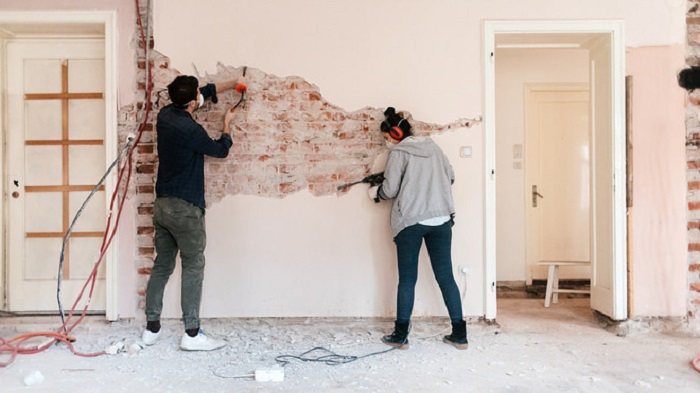 Google Rating
Google Rating
- 5.0
-

Read our reviews
 May 20, 2021
May 20, 2021
Remodelling and DIY upgrades are made to appear easy on home improvement television shows. The family had a new kitchen by the next commercial break thanks to some fast measuring, sawing, and nailing. But nothing in reality works the way as they broadcast on television—and the process of remodelling is no exception.
Home remodelling, like anything else in life – it needs practice. The more windows you add, the better you become at it. However, you are unlikely to do a good job the first time. Here’s how to tell which projects are suitable for a do-it-yourselfer and which require professional assistance.
Since most of us don’t have the time to learn all of the construction skills we’ll need, we recommend focusing on a few areas that concern you and leaving the rest to the professionals. If you’re learning how to renovate, start small before moving on to more challenging projects.
Before attempting to rewire an entire room, replace an electrical outlet or install a new light fixture. Before you start building a deck, try creating a raised garden bed. You’ll improve your skills, learn which resources you’ll need, and explore the limits of your time, energy, and patience if you start tiny.
Below we have prepared a list of projects that you can do it yourself or need a professional.
You probably don’t need the assistance of a skilled designer if you are installing wallpaper or a new light fixture. A designer’s contribution, on the other hand, may be invaluable for more involving remodelling ventures.
A competent designer will assist you in developing a project-wide design that meets all of your requirements, avoiding the pitfalls of dealing with (or having to redo) poor design decisions. A designer understands the crucial technical details that make a difference in the final result, and sound design is all about the details.
With projects that are primarily decorative and don’t require a lot of experience about how things work under the surface, homeowners also make good do-it-yourselfers. Painting is the ultimate DIY project because of this.
It’s quick to read, easy to spot when you’ve made a mistake, and can be completed in a weekend. When working on projects under the surface of the wall, exercise caution. Electrical wiring, for example, maybe risky if you don’t know what you’re doing, and errors aren’t always obvious.
If something goes wrong, you could not only get a nasty shock, but you could also destroy your system or cause a fire.
Pulling up old carpet, scraping wallpaper, or removing old bathroom tiles are all possible ways to save money. Other tasks are more complex. Demolition of a wall appears to be a simple DIY project.
After all, how badly can something you’re trying to kill be messed up? The response is a resounding yes. Check with a professional to see if your wall is load-bearing; removing a load-bearing wall could cause the ceiling to cave in.
Before you begin demolition, you must first determine if the wall contains electrical wires, plumbing, or gas lines, and devise a strategy for dealing with any possible issues.
Minor plumbing repairs, toilet maintenance, and shower head installation are mostly doable by homeowners, but larger projects can be disastrous if done improperly. You can damage pipes, cause leaks, and ruin walls and floors if you make a blunder while installing a bathtub or a new shower pan.
In the end, the expense of cleaning up the mess will far outweigh the cost of hiring a plumber in the first place. However, if you’re remodelling a bathroom, you can save money by doing the painting and minor repairs yourself and leaving the plumbing and tile to the professionals.
Planting and mulching are activities that many homeowners can do with ease, and many DIYers enjoy planting and weeding their own gardens. Hardscape ventures, on the other hand, should be approached with caution.
Installing a walkway or constructing a driveway can necessitate more expertise than you have time to create and specialised equipment that is costly to purchase. While building a deck can appear to be a simple carpentry job, it is often much more complex. Many jurisdictions require decks to obtain a permit—and the knowledge that comes with getting a ticket.
If your roof is broken, you might be tempted to repair it yourself, but this is a bad scheme for many different reasons.
It can be challenging to match shingle colours, and most homeowners lack the necessary equipment to install shingles properly. Furthermore, a band-aid solution to roof problems could result in additional damage, necessitating even more costly repairs.
You may be able to do some interior or exterior restoration projects if you’re handy with materials, but significant structural work is a different story. In general, if a project needs a permit from your local council it’s because it’s complicated and/or risky.
The requirement for a permit indicates that the work should be done and reviewed by experts. A professional will be familiar with the permitting process in various jurisdictions and will be up to date on the most recent codes. You can save money, time, and effort as a result of this.